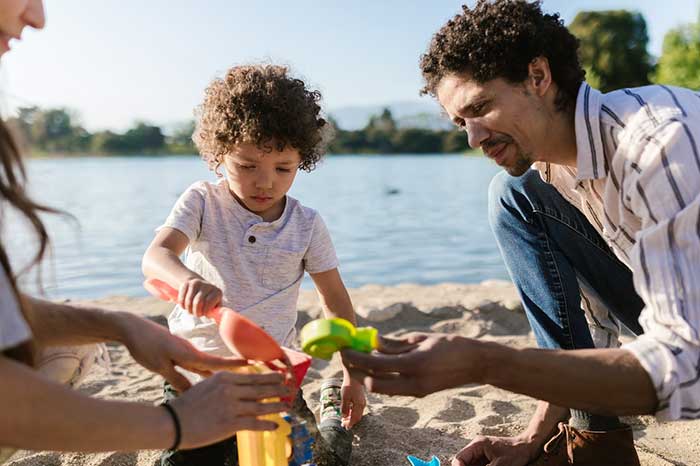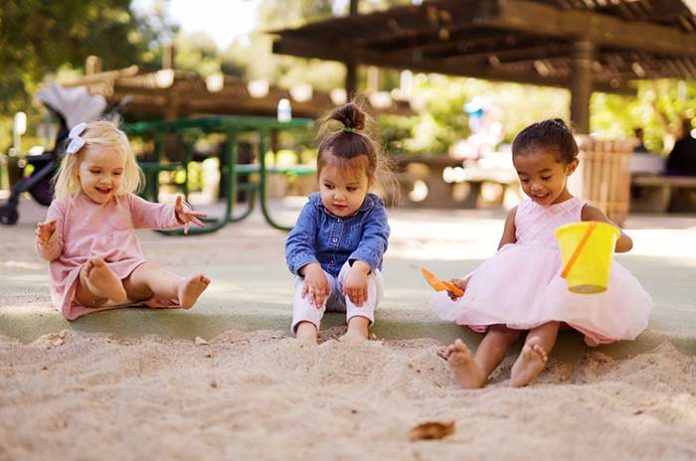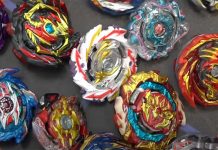New research shows that less than half of children get enough playtime. A few organizations raising awareness on the importance of play in childhood development surveyed 8,950 children to see how much free play their children get. Results found that about 51 percent of children went outside to walk or play once a day with either parent. Educational activities for kids that combine fun and learning are the need of the hour.
We live in a world where most parents juggle work and home life. Technology has also become so advanced that many kids prefer to use gadgets to entertain themselves. Still, there is no substitute for healthy physical activities for kids. Not only does physical play promote cognitive development, but it also assists children in developing interpersonal skills.
Like any good parent, you want your child to succeed in life. You want them to get participation ribbons and win awards for academic achievements. You want your youngster to have a well-paying and fulfilling career, but you also wish for them to be happy well-adjusted grownups.
5 Play-Based fun learning activities for kids

You don’t have to go far or spend tons of money for your kids to have play-based activities. Chances are, the materials you need will already be in the cupboards or drawers at home. So read on and see which of these five options suit your child best.
1. Sand and Water Play
Sand and water play is an excellent opportunity for parents to introduce scientific learning to kids.
The act of digging, sifting, and scooping sand can teach your child how things work. Specifically, how this material behaves when it is moved or transported. Transferring the tiny grains from one container to the next exercises your little one’s motor skills.
Water play allows your preschooler to experiment with scientific concepts like volume. They can observe how this liquid substance takes up the shape of the container it’s in. This educational activity for kids also helps develop hand-eye coordination and physical strength.
Sand and water play fosters self-confidence. And when your little one does it with a friend, they learn teamwork, sharing, and social skills.
2. Dress-up and Role-Play
Encourage your child to be imaginative to develop cognitive and social skills. Imagination can bring about new ways of doing things. Your little one can also learn about critical thinking and creative problem-solving through developing their imagination.
Playing dress-up is a great way to unleash their imaginative spirit. Having a bunch of costumes and props will inspire your young one to create characters. Then they will create stories where their characters interact.
In addition, dress-up and role-play allow your toddler to make sense of the adult’s world. It enables them to understand roles and interests and boosts social interaction. Finally, dressing up helps to reinforce the self-care aspects of self-dressing, which is essential for primary school life.
Your child might imagine themselves as a medieval knight with a shiny sword, a teacher reading stories to her stuffed animals, or a chef making delicious meals. Whatever shoes they imagine filling in, you can be sure your youngsters will benefit from this educational activity for kids.
3. Sensory Play
Sensory play is the most effortless activity to do at home. You can use everyday household items, such as paper, baby oil, and cornstarch.
Have bargain-priced cans of shaving cream lying around? You and your preschooler can sit at the kitchen table and play around with it. Squirt some of the foam for each of you. Move your fingers through it and encourage your child to do the same. Draw shapes and letters using the foam.
Getting kids to talk about what they see and feel is the goal. So insert gentle prompts and questions to make it a more enjoyable experience.
4. Using Playdough
Remember that colorful dough you played with as a child? Well, it’s still a great material to use in a play-based activity with your children.
Playdough strengthens the muscles and bones in the fingers in preparation for activities like writing, carrying objects, and dressing. It teaches creativity and develops hand-eye coordination. Plus, it builds language and literacy, science, and common core math skills.
You can purchase Play-Doh at the toy store. But if you want to be sure your kids are playing with something that’s food-safe, create your own version.
Once the play dough is ready, gather additional materials to make things interesting. You can use blocks, cookie cutters, leaves, and straws. Your children will have great fun molding the soft clay into flowers, dinosaurs, and objects. They can also create impressions using some of the items mentioned.
Another idea would be adding some beads to the dough, so the little ones get a fine-motor exercise while increasing play value.
5. Discover Nature
Not all play-based activities need to be done indoors. You and your toddlers can spend a few hours outdoors.
For example, you can go out to the yard to check out the cool things growing out there. With your guidance, let your child feel the foliage on trees or touch the trunk. You can also pick a flower or two and talk about the colors of the petals.
Alternatively, you and your kids can sit on the grass and observe the squirrels darting about. Or let them chase after the butterflies flying around the garden.
Always have safety in mind when accompanying young ones in discovering nature. Make sure there are no stubby roots they can trip over or sharp rocks that can cut their little hands.
Also, ask questions that will get your child thinking and drawing conclusions from their previous experiences in nature. Ask them to describe what they’re seeing, smelling, or feeling with their hands. Is it soft or hard? Are the leaves a different or the same color as the last time you explored?
Be Involved
Play-based activities should be focused on children. Giving them the time and space to explore is good, but this doesn’t mean you can’t join the fun.
Get involved during playtime. Engage with your little one as they build sandcastles. Or play the role of the fairy godmother when they dress up as Cinderella.
Don’t dictate or attempt to control the activity unless you’re doing something requiring adult supervision. Give your child options and let them decide on how the game progresses.
Doing so boosts your young one’s cognitive and physical development. It also allows you to bond and creates memories that will last into adulthood.
Hand-Picked Content: Holiday Gift Guide For Kids To Make Them Love You More





